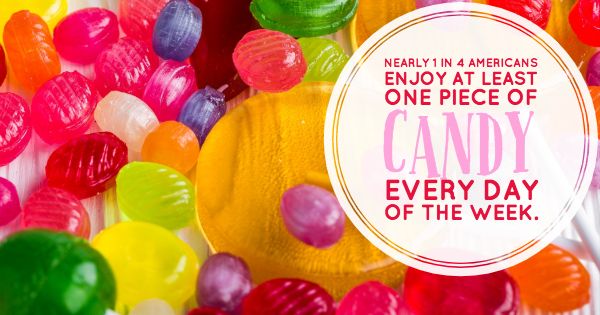
 There’s no doubt about it: we love our sweets. Nearly one in four Americans enjoy at least one piece of candy every day of the week. Not only do candies satisfy our cravings, but they also bring about a sense of nostalgia. Every time we unwrap our favorite chewy candy, we’re instantly transported back in time. But how much do you actually know about where our favorite chewy candies got their start? In today’s post, we’ll explore the origin stories of five of your favorite sweets.
There’s no doubt about it: we love our sweets. Nearly one in four Americans enjoy at least one piece of candy every day of the week. Not only do candies satisfy our cravings, but they also bring about a sense of nostalgia. Every time we unwrap our favorite chewy candy, we’re instantly transported back in time. But how much do you actually know about where our favorite chewy candies got their start? In today’s post, we’ll explore the origin stories of five of your favorite sweets.
- Tootsie Rolls: This chocolate flavored chewy candy has been an American staple since 1907. Tootsie Rolls were the first penny candy to ever be individually wrapped in the U.S. — and they also never melt! In fact, there was a patent filed by maker Leo Hirshfield to protect the Tootsie Roll’s unique texture. These candies were named after the creator’s daughter, whose nickname was Tootsie. The official timeline of events has been called into question, but one fact is certainly true: Tootsie Roll Industries is now one of the largest candy makers in the world, producing approximately 64 million Tootsie Rolls every day.
- Gummy Bears: Gummy candy may be a popular choice for younger children, but these little fruit-flavored bears have a special place in the hearts of countless adults, too. The gummy bear has Germanic origins, where a confectioner named Hans Riegel started the Haribo company in the 1920s. While his first foray into making his own sweets was only moderately successful on the local festival circuit, Riegel then produced soft, fruity candies in the shape of dancing bears — and the rest, as they say, was history. Riegel certainly wasn’t the first one to produce a popular chewy candy, but his invention has certainly stood the test of time.
- Salt Water Taffy: When you buy taffy online, you’ll soon be enjoying one of America’s historical favorites. There are a lot of myths surrounding the beginnings of this beloved candy, like an assistant who accidentally substituted fresh water for seawater in the recipe or a huge storm that caused salt water to wash its way over freshly made candy. No one can even agree on who invented the stuff, as candy makers David Bradley, Joseph Fralinger, and Enoch James are all credited with creating and popularizing salt water taffy. One thing we do know is that this chewy candy was originally produced and marketed during the late 1800s in Atlantic City. It was sold as a way for visitors to continue their vacation even after they left the boardwalk — a sentiment that continues today.
- Bit-O-Honey: This nostalgic candy first appeared on the scene in 1924 and can still be found in many candy shops today. The distinctive honey flavored taffy contains bits of almonds (hence its name) and is known for its long-lasting chewing experience. While it was originally made in candy bar form (with six pieces of taffy in one package), it’s now typically sold in individual, bite-sized portions. Other iterations of Bit-O-Honey were made, but they failed at market because nothing could compare to the original. Ownership has changed over the years, but the essence still remains pretty much the same.
- Charleston Chew: You can’t discuss chewy candy without talking about this treat! With its flavored nougat coated in chocolate, it would be a big enough hit on its own. But it was also named for the Charleston, a popular dance during the mid-1920s (when the candy was invented by the Fox-Cross Candy Company). Founder Donley Cross got his start as a Shakespearian actor. But when he hurt his back falling off the stage, he needed to find another career and decided on candy making. While the original Charleston Chew featured vanilla nougat, there are now chocolate and strawberry versions available. And unlike other chewy candies, this one can also be enjoyed another way: by putting it in the freezer.
After that history lesson, you’re probably looking to satisfy your candy craving. Whether you’re a lover of chewy candies or you love classic chocolates, we’ve got you covered. Check out our huge selection or contact us today to learn more.

Leave a Reply
You must be logged in to post a comment.